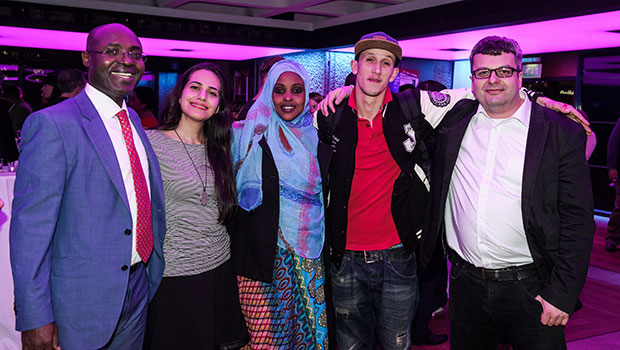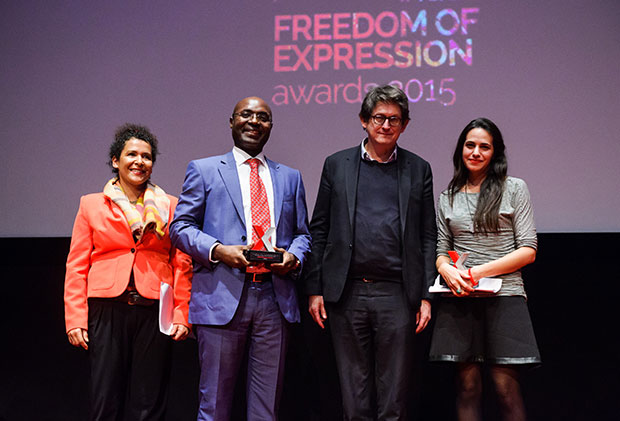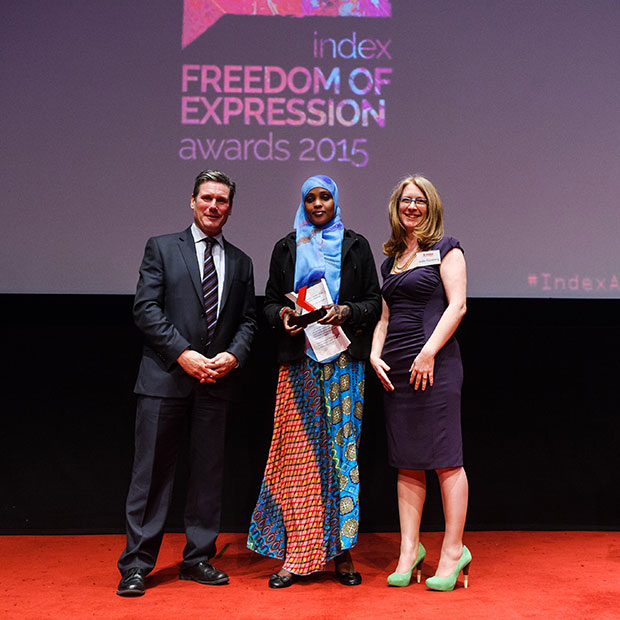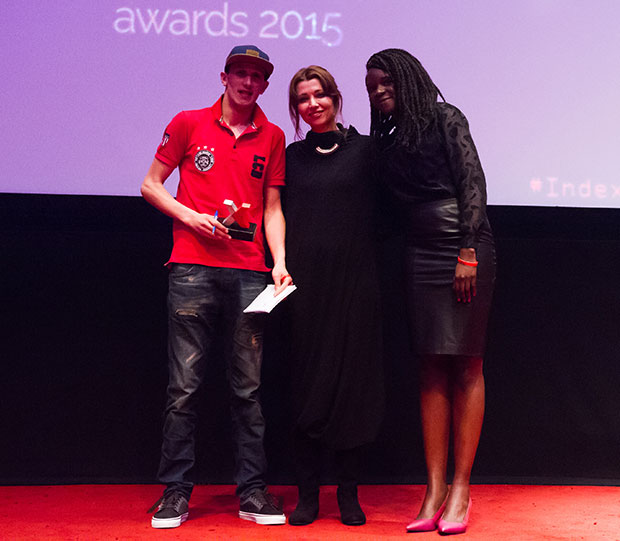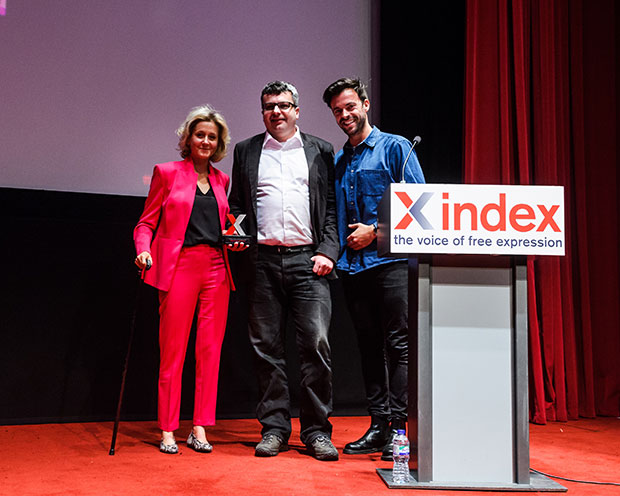Brett Bailey / Exhibit B
[vc_row][vc_column][vc_column_text]Name of Art Work: Exhibit B
Artist/s: Brett Bailey
Date: September 2014
Venue: The Vaults, presented by The Barbican Centre
Brief description of the artwork/project: The Barbican’s publicity material described Exhibit B as: “a human installation that charts the colonial histories of various European countries during the nineteenth and twentieth centuries when scientists formulated pseudo-scientific racial theories that continue to warp perceptions with horrific consequences.”[/vc_column_text][vc_single_image image=”94431″ img_size=”full” add_caption=”yes”][/vc_column][/vc_row][vc_row][vc_column][vc_custom_heading text=”Why was it challenged? ” font_container=”tag:h3|text_align:left” use_theme_fonts=”yes”][vc_column_text]A campaign is formed in response to Exhibit B: Boycott the Human Zoo is a coalition of anti-racism activists, trade unions, artists, arts organisations and community groups. They set up an online petition which is signed by over 22,000 people, calling on the Barbican to decommission the work and withdraw it from their programme. The key objections named in the petition are:
- “[It] is deeply offensive to recreate ‘the Maafa – great suffering’ of African People’s ancestors for a social experiment/process.
- Offers no tangible positive social outcome to challenge racism and oppression.
- Reinforces the negative imagery of African Peoples
- Is not a piece for African Peoples, it is about African Peoples, however it was created with no consultation with African Peoples”
[/vc_column_text][vc_custom_heading text=”What action was taken?” font_container=”tag:h3|text_align:left” use_theme_fonts=”yes”][vc_column_text]The Barbican issues a response to the petition, acknowledging that Exhibit B “has raised significant issues” but commenting that this is not a reason to cancel the performance. They accept the campaigners right to peaceful protest but ask that they “fully respect our performers’ right to perform and our audiences’ right to attend.” Campaigners are in communication with senior management at the Barbican, and they contact the police about their plan to picket the venue. Kieron Vanstone, the director of the Vaults also contacts the British Transport Police – as they have jurisdiction over the Vaults – about the possibility of needing additional policing on the night. nitroBEAT, who had cast the show in London and took a leading role in mediating between the two ‘sides’ organises a debate at Theatre Royal Stratford East the night before the opening.[/vc_column_text][vc_custom_heading text=”What happened next?” font_container=”tag:h3|text_align:left” use_theme_fonts=”yes”][vc_column_text]On the opening night of the installation, just one of the two BTP PCs allocated to the picket attends. Protesters breach the barriers and block the doors to the venue. The PC on duty calls for backup officers. ACC Thomas reports “that ‘about’ 12 BTP officers and 50 Metropolitan Police Service Officers respond to these calls.” Vanstone describes a huge police presence, including riot police, dogs and helicopters overhead. When Inspector Nick Brandon, the BTP senior officer in charge asks what the campaign organisers want, they respond that they want the show to be closed down, or they will picket it every evening. Sara Myers of Boycott the Human Zoo reports that Brandon says “‘we need to be out fighting crime. This is much ado about nothing, and we haven’t got the resources to police it.” The Inspector recommends that Vanstone closes the show. In partnership with the Barbican, Vanstone agrees to do so. When the campaigners request written confirmation, the police officer ensures that the venue provides this. The installation is cancelled.[/vc_column_text][vc_custom_heading text=”Reflections” font_container=”tag:h3|text_align:left” use_theme_fonts=”yes”][vc_column_text]Louise Jeffreys – Artistic Director, Barbican
The Barbican’s experience of Exhibit B was a catalyst for a significant amount of change within the organisation. The protests and eventual cancellations of performances led to us thinking deeply about a number of areas of our work, looking at how we could learn from this situation so we could continue to present challenging work and ensuring the experience we had didn’t contribute to an environment where organisations felt they couldn’t programme artists whose work deals with difficult subjects.
Our starting point was the belief that it was important that we remained an organisation willing to take risks and that we didn’t want to shy away from putting on work that invites discussion and debate. To do this we felt we needed to have the planning processes in place to ensure this kind of work could be presented safely, that we were confident about how it fitted into our wider programme, that we contextualise it in the right way and that we have clear, artistic reasons for programming it.
This work has included formalising our risk review process for our artistic programme; it involved us contributing to the development of What Next’s practical guidance for arts organisations on meeting ethical and reputational challenges; and it continued with the development of the Barbican’s first ethics policy, which we now use as a basis for making ethical decisions across areas such as programming, fundraising and partnerships.
Combined, these measures have all contributed to us becoming more confident in the work we present, encouraging a collaborative, organisation-wide approach to making difficult decisions, dealing with risk and investing in artists and works that deal with potentially controversial issues.
The Exhibit B experience also led to us further interrogating our approach to equality and inclusion. This led to positive changes such as the development of a new Equality and Inclusion strategy and the building of relationships with artists and companies who have added to the creative richness and relevance of our programme as we look to try and represent the widest possible range of human experiences on our stages, in our galleries and on our screens.
The cancellation also led us to think about how we work with the police, and the importance of their role in protecting free expression. At the time of the Exhibit B protests we felt we had no choice but to follow their advice when they recommended we cancel all future performances. I feel we’d question this kind of decision-making more now, with the work we’ve done since the closure making us much better informed on the legal framework around freedom of expression.
Sara Myers – Boycott The Human Zoo Campaign lead
At the time the black community was campaigning against so many things – deaths in police custody, acts of racism – and there never seemed to be any victory. I think the legacy of Exhibit B is that it gave a monumental landmark victory which we hadn’t had. In the last 30 years, this was the one thing that we won, the one time that our voices were heard and taken seriously. I know a lot of people were talking about censorship and not having an understanding of art, and I think all of that is irrelevant. It was about not taking that narrative of our history, that slave narrative and keeping us boxed in there; we are more than that, and you will listen to us.
There were two camps, one called me a reincarnation of Stalin and the other thought I was going to be the new speaker for all things black. But what people failed to realise was [while] I was the face of the campaign, I started the petition and led the campaign it was owned by the whole black community – pan-African, Christian, Muslim, LGBT, young, old, celebrities.
A lot more people began to speak out. In fact it went a bit crazy after Exhibt B, there were petitions about everything and everybody was calling everybody out and we got a lot of things taken down. It birthed a lot of new activists and Exhibit B became a movement. The way [we used] social media, institutions don’t want that, they don’t want to be tagged and dragged for days on social media. Brett was challenged in Paris [where] people were tear-gassed and water-cannoned which was terrible. It went to Ireland, very much on the quiet, but there was not a very large black of mixed race community [where it went]. He tried to take it to Brazil and that got shut down. He tried to take it to Toronto, but it was [challenged} and it didn’t go there.]
Another legacy was that academics were talking about the whole campaign, whether positively or negatively. It was a very controversial campaign and it opened up conversation about so many things – about racism, institutional racism, how an emerging black artist might not get a platform, but a potentially racist guy from South Africa might. Who is censoring what? Who is at the helm of censorship? What about all the exhibitions that they haven’t put on? Is it us campaigning, peacefully protesting. Who owns the story? Also how the media reported it as a violent, angry mob, and yet there wasn’t one arrest. How the Barbican didn’t take responsibility for the whole part they played in this.
For me personally – my claim to fame will be Exhibit B and that’s monumental. To know that I’m part of Black British History. Maybe in Black History Month, they’ll have my picture and talk about what I did. And that’s great because I’ve got grandchildren and they’ll be able to see that.
I’m not saying that Brett isn’t a talented artist. It was the imagery was traumatic for a community because it was not part of [our] ancient history. This is something we live every day, down to deportations – in fact that there was one today people who have lived here all their lives deported back to Jamaica. We are still living the ramifications of that, whereas Brett is quite removed from his colonial past. It also brought up a massive discussion about colonialism and the effects of colonialism today.
A detailed case study of the policing of the picket of Exhibit B is available here.
Stella Odunlami – actor, director, performer in Exhibit B (London, Ireland, South Korea and Estonia)
The piece arrived at a time of change. Those tensions around the idea of race and representation had always been there, but the squeeze of the government cuts to a lot of provision, particularly to black and minority backgrounds, were being felt. The rhetoric around our wonderful multi-cultural society was starting to fall away. It landed on a sore spot, places were pus had been building up under the surface. All these conversations and interactions around the legacy and inherited histories that we are being forced to deal with at the moment – [it] brought all of that to the surface.
It has made me hyper aware of the lack of space and opportunity to have these conversations and how desperately we need them. We don’t speak of what the West did in Africa as a form of genocide. Within the black community, whatever that may mean, people find it really hard to engage with conversations around race in public forums because the conversation always feels dishonest, because the ground zero hasn’t been reached. So when people talk about who makes art, access to art, access to funding and education we are never going back to the beginning to understand why that is.
I still think it’s a beautiful, powerful piece. It opened up conversations; everybody who sees it is automatically implicated in some way or another. You have to begin to confront your own relation to history, and that is something that we don’t do very often. I’m still trying to unpack my ideas around the existing theatre model and what theatres as cultural spaces are aiming to do. Very often the places that present this work are only interested in an economic model and don’t recognise or feel the wider responsibility. It comes down to what are we demanding of our arts and cultural spaces, what we want from them.
Having taken the show to Ireland, to South Korea and Estonia, it surprised me how my concept of the show being linked explicitly to the European history of colonisation, was being refracted through different prisms. At around the time we were in Ireland, the story broke about many women in the early 1900s who had fallen pregnant to black men, had been held, and had their children taken away. Mass burial sites uncovered these children who had been treated appallingly and had passed. This history had been repressed by the state and the church, echoes of that were only starting to be discussed. I was nervous before going to [Tallinn] because I had heard about incidents of violence against black African bodies there. There were a lot of students coming from Africa because there seem to be more scholarships and migration for education seems to be easier. They are having to think about migration, without following the western European model which hasn’t really worked. South Korea’s history with Japan brought those conversations to the fore. They had no idea about what had happened in these parts of the world and people came back with notepads, to take down the names, the places, the dates.
The last performance was in Tallinn, it was very hard, really sad. We all felt such a responsibility for these stories, for them being shared and acknowledged. Whose stories are remembered, whose stories are told. The weight of that responsibility, and the personal investment we all had in that, is huge.[/vc_column_text][three_column_post title=”Case Studies” full_width_heading=”true” category_id=”15471″][/vc_column][/vc_row][vc_row][vc_column][/vc_column][/vc_row]

